- Home
- Toni Morrison
The Source of Self-Regard Page 24
The Source of Self-Regard Read online
Page 24
I mentioned Gertrude Stein as a paradigm or precursor of modernism. Now I would like to look at one of her most admired works to illustrate what I take to be a fascinating display of literary Americanism, to try to establish its connection to her innovations, her newness, her representations of individuality, her perceptions of sexual power, and the privileges emanating from class and race.
The three lives Gertrude Stein renders in her novel of that name are decidedly unequal. Not only in treatment, as I hope to demonstrate, but also in various other ways. Of the three women that constitute this work (a work of three stories put together to make a novel or novella), one covers seventy-one pages, another requires forty pages, and another, the central and middle narrative, takes up twice the length of one and almost four times the space of the other. This unequal distribution of space, each of which focuses on one woman, is marked by a further differing inequality. The first part is called “The Good Anna,” the last part is called “The Gentle Lena.” Only the central, centered, and longest part has no adjective; it is called “Melanctha.” Simply. As you will remember, Melanctha is a black woman (or as Miss Stein identifies her, a Negro). Sandwiched in between the two others, she appears framed, bounded by the others as though to foreground and underscore her difference while keeping it firmly under control. Before I get into the remarkable differences between Melanctha and the two women who stand to her right and to her left, I should perhaps identify the similarities—for there are some, although they seem to throw further into relief Melanctha’s difference, and the difference Stein makes of her. All three women constituting this text are servants; all die in the end; all are mistreated in some fashion by men or the consequences of male-dominated society. All are at the line between abject poverty and deserving poverty. And although all were born in some country, the similarities end precisely at this point. The two white women have a nationality: German, first, and then, as immigrants, they can assume the category German American if they choose. Only Melanctha was born in the United States, and only Melanctha is given no national identification. She is a Negro, and therefore even in 1909, forty years after the proclamation freed all slaves, without a land, without a citizenship designation. She is never described as an American and certainly never labeled one by the narrator.
For Miss Stein, Melanctha is a special kind of Negro. An acceptable one, for she has light skin, and the point has power when we note that her section opens with the comparison between Melanctha and her very close friend, Rose, who is described repeatedly (insistently) as very black: “sullen, childish, cowardly, black Rosie grumbled and fussed and howled and made herself to be an abomination and like a simple beast.” Within this collection of adjectives are all of the fetishes, forms of metonymic reduction, collapse of persons into animals to foreclose dialogue and identification and economical stereotyping that is pervasive in the implications, if not the explicit language, of most pre-1980 fictional descriptions of Africanistic characters. “Rose Johnson was a real black, tall, well built, sullen, stupid, childlike, good looking negress.” “Rose Johnson was a real black negress but she had been brought up quite like their own child by white folks” (italics mine). We note at once that it is not necessary for Stein to describe or identify these white folks, to say whether they were good, or well educated, or poor, or stupid, or mean. It is enough apparently that they were white, the assumption being that whatever kind of white people they were, they were that, and therefore the instruction given to Rose would place her in a privileged position, a fact that Rose herself not only acknowledges but is grateful for. Melanctha, on the other hand, being light skinned, is described as “patient, submissive, soothing, and untiring.” She is also a “graceful, pale yellow, intelligent negress” who has “not been raised like Rose by white folks but then she had been half made with real white blood” (italics mine). The point is redundantly clear. While Rose can claim the good fortune of being reared by white people, Melanctha has the higher claim, the blood claim. There is some carelessness here, for we are later made to understand that Melanctha’s father was “very black” and “brutal” and her mother was a “sweet appearing and dignified and pleasant, pale yellow, colored woman.” This does not suggest the “half-white” label. Although Stein calls Melanctha a “subtle, intelligent, attractive, half white girl,” according to the racial genetics of the day, a half-white person would have to have one white parent. I think this latter possibility would offer too much complexity for the author; she would have had to explain how the white parent (in this case the mother, since the father is pointedly black) happened to get together with the black parent, and it is perhaps sufficient that Melanctha’s white lover is later on examined as pivotal to her destruction without having to go into the ramifications of another mixed-blood relationship.
I am not repeating these routine racial lapses and linguistic shortcuts aimlessly, but to stress the fact that the recourse Stein has to them, in order to draw certain conclusions, is so necessary either she is willing to make glaring errors in the finer points of racialism and to risk losing the reader’s trust or she loses control of her wayward and insubordinate text. For example: Rose Johnson is repeatedly called childlike and immoral. But she is the only one of Melanctha’s friends who sustains adult responsibility—a marriage, a house, some generosity. Stein asserts Rose’s stupidity, but fails to dramatize it. We find no evidence whatsoever of her being stupid. And in spite of Melanctha’s revered white blood, she spends most of her time in the streets, along the docks, and railroad yards. One has to question the logic of this blood fetish: perhaps it is her “white” blood rather than her black that encourages this immorality that Stein does not remark upon.
Equally interesting is the role of African American men in Melanctha’s story. That is, the place of fathers, husbands, friends of fathers, as well as the beau in Melanctha’s life. To Stein’s credit, there is equal distribution of virtue and malice among the white and black men; to her discredit, she relies heavily on national stereotyping for them all: Irish prejudices, German ones, and, as is clear from the obsessive blood fetish mentioned earlier, conventional ones. Such pseudoscience ought to be surprising from one who attended medical school for a couple of years. In any case, she abandons all responsibility for particularizing her Africanistic characters by “explaining” and “justifying” their behavior with the easy tools of metonymic reduction that skin color provides, and the economy of stereotype that is companion to it. Again, however, this strategy forces Stein into contradictions so profound, the trust of the reader dissipates altogether. For example, Melanctha’s father is repeatedly described as “brutal and rough” to his daughter, and we are told that he is first a visitor to the household on an irregular basis, and then absents himself from them and the novel altogether. The evidence presented to us for his brutality and roughness is that he is “black” and “virile.” When we look to see what this black, virile, brutal, and rough man is capable of we see that he protects his daughter from what he believed were advances made to her from a male friend and gets into a fight because of this protection. It is perhaps this contradiction that conveniently expels him from the text. Had he stayed, Melanctha would have had a fierce protector/savior and not gotten into such deep trouble with men.
Most notably, however, are not the routine techniques of making the Africanist characters different as blacks, but what I believe is the reason for their inclusion in the first place, for the Melanctha section services Stein in a very specific way. The Africanism of that section becomes a means by which Stein can step safely into forbidden territory, articulate the illegal, the anarchic, ruminate upon the relations among women with and without men. Of all three of the women in the novel, only with Melanctha are sexual education and sexual relations central to the narrative and the fate of the characters. It may not have been thinkable, even for Gertrude Stein, to discuss, in 1909, explicit knowledge of carnal activities with white women—even if they were
of a lower class. If we compare the sensuality/sexuality of Anna and Lena, we see that their lives are different from Melanctha’s; they are chaste; their marriages arranged; their submission to the demands of patriarchy complete. It seems clear that, like other American writers, especially those we associate with modernism, Stein felt free to experiment with sexuality in narrative, felt the subject palatable if the object upon which these experiments are carried out is Africanistic. Like the French doctor who was able to develop the paradigm for his gynecological instruments after sustained experiments with his black servant woman, Gertrude Stein is comfortable advancing her “newness,” safe in her choice of forbidden territory because she is operating on a body that appears to be offered up to her without protest, without restraint. Wholly available for the articulation of the illegal, the illicit, the dangerous, the new. Like the white entertainers who were able to garner huge audiences when, in blackface, they spoke through the Africanistic persona (as), they could say the unspeakable, the forthrightly sexual, the subversively political.
What are some of these new and illicit topics?
There are at least three: (1) the intricate bonding of women not for protection but for the resources of knowledge they provide; (2) the triangular formation of sexuality, freedom, and knowledge as principle to a modern woman; and (3) the dependency of the construction of an American on an Africanistic presence. There is a genuine, even desperate love between Melanctha and Jane and Melanctha and Rose (in spite of the difference in their skin color). The sufferance and wisdom Melanctha receives from these friends is far superior to the things she learns from her men friends, the black doctors, or black gamblers. All of the women in Three Lives come to a sad end, but it appears that only one, Melanctha, learns anything useful, and perhaps modern, about the world before her demise. It may be that in this respect, Stein’s signal contribution to literature in her encounter with an Africanistic presence is to give this encounter the complexity and the modernity it had otherwise been denied by mainstream writers of that time. Although Stein’s assumptions about white and black blood are traditionally racist, she provides an interesting variation on the theme by having Melanctha treasure the quality (if it can be called such) of blackness from her “unendurable” father; having the “very black” Rose advise Melanctha and persuade her not to commit suicide and be drawn as a “regularly” married woman with apparently very high standards of morality—denied by Stein’s insistence that Rose “had the simple, promiscuous unmorality of the black people.”
Key to Stein’s exploration, however, is the question of the relationship of freedom for women to sexuality and knowledge. In this quest, we see again the difference she makes. Three Lives moves from the contemplation of an asexual spinster’s life—the Good Anna—in its struggle for control and meaning, to and through the exploration of a quest for sexual knowledge (which Stein calls “wisdom”) in the person and body of Melanctha, an Africanistic woman; to the presumably culminating female experience of marriage and birth—the Gentle Lena. That Stein chose a black woman for the examination of the erotic suggests and theatricalizes the uses of Africanism to represent and serve as license to address illicit sexuality.
Although Stein has her tongue in her own cheek for much of the text, has firm opinions that she puts in the mouths of others, and is forthrightly comic, even parodic in some passages, we are eager to follow her fairly radical look into the true lives of these women, but in only one of them (Melanctha) does the sexual repression of the other two not only disappear, but its repudiation becomes the central theme of Melanctha’s and Stein’s enterprise. The black woman alone provides access to a meditation on sexual knowledge, and it is of utmost importance that the author calls Melanctha’s flirtations, her wanderings alone down to the docks and railroad depots to look at men, her promiscuity—all this she calls an eagerness for wisdom. The “very black” Rose is labeled promiscuous, but the half-white Melanctha is searching for knowledge. This difference in labels for presumably identical behavior is distancing and functions as a covert manner of giving dignity to one kind of inquisitiveness and discrediting another simply by marking a difference in the color of the inquirer’s skin. Further differences are notable when the comparison is between the white servants and the black women. Neither Anna nor Lena is curious about sex. Good Anna never entertains the possibility of marriage or a love. Her “romance” is with her first close friend, Mrs. Lehntman. Gentle Lena is so terrified, dull, and uninquisitive, Stein does not have to speculate on the legal sexual intercourse that takes place between Lena and her husband, Herman. She simply delivers four children, dying with the last and leaving her husband quiet, content, and himself a nurturer. Only Melanctha has courage, feels the attractive power of her black father, and the weakness of her pale yellow mother, senses that her identification with her passive mother will give her no respect; she is free to roam the streets, stand on corners, visit the scene of black men at work on the railroad, at the docks; to compete with them in fearlessness, trade barbs with them, tease and escape from them—and to talk back to them. It is Melanctha’s authoritative voice that examines, articulates, and questions erotic heterosexual love, which combats the middle class’s ideal of domestic/romantic union, and which boldly enters the field of male-female encounters as a warrior—a militant. It is interesting to me that in her probe of the value of carnal knowledge, Stein looks not toward the very black Rose, the one she ascribes unmorality and promiscuity to, but to the half-white, college-educated Melanctha. It is as though, fearless as she was, Stein could not bear to investigate these very intimate matters on the body of a very black woman—the risk of such an imaginative association seems to have been too much for her. One feels her disdain of Rose, but her admiration of Jane’s loose behavior, like Melanctha’s, is ambivalent and rendered in clearly elevated and cynical language. Jane Harden is identified as a “roughened woman. She had power and she liked to use it, she had much white blood and that made her see clear….Her white blood was strong in her and she had grit and endurance and a vital courage.” There is no mistaking Stein’s codified values and opinions regarding race. She is identifying her own self with the white blood that makes for clarity and strength and vital courage, but is working its sexual expression out on the not-white blood that courses through these bodies in apparently two separate veins. The ludicrousness of these claims of what white blood is capable of in its generic transfer of power, intelligence, and so on is, of course, emphasized by the fact that in the same breath, if not paragraph, we witness the behavior of completely white people, people with all-white blood who are passive, stupid, and so on. If we were going to succumb to the idiocy of scientific racialism, the logic of the opposite would be unspeakable: that in Three Lives it is the black blood that provides the “vital courage” and “endurance.” There is tension and some readerly distrust of these hierarchies and claims, because of the contradictions that accompany them. Africanistic women, for example, are suffused with loose immorality, but Mrs. L., the friend and major force in Lena’s tiny world, spends her professional life midwifing and likes especially to deliver girls in trouble; she even seems to be involved in abortions with her wicked doctor lover at one point. Why these white girls in trouble are not also guilty of amorality and looseness as are their dark sisters is part of the question these matters pose. That series of episodes is glazed over by pointing to the generosity of Mrs. L. and her skill. There is no lingering over the unmorality of her patients; they are not assumed to have a “promiscuous” nature because of their skin color, or even, it seems, to have been seeking the wisdom of the world down at the docks.
The last point to which I wish to direct attention is the one with which I began: that much of this business of imagining Africanistic people has to do with the careful, consistent construction of an American who gets his or her distinction in asserting and developing whiteness as a precondition to Americanness.

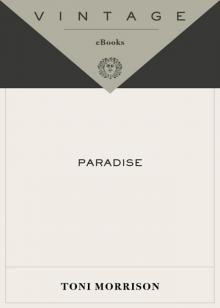 Paradise
Paradise Beloved
Beloved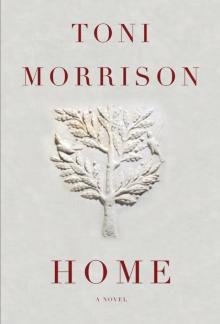 Home
Home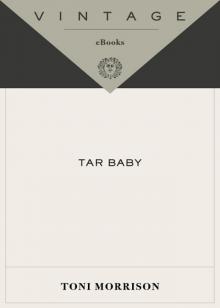 Tar Baby
Tar Baby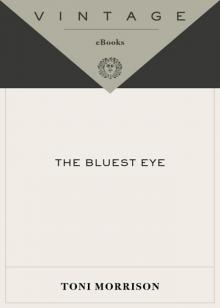 The Bluest Eye
The Bluest Eye Jazz
Jazz Love
Love Sula
Sula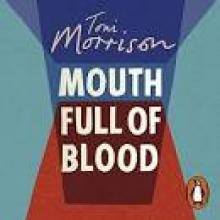 Mouth Full of Blood
Mouth Full of Blood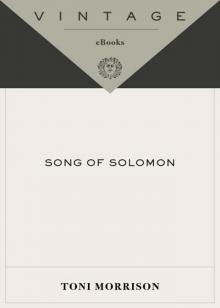 Song of Solomon
Song of Solomon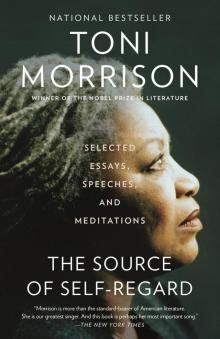 The Source of Self-Regard
The Source of Self-Regard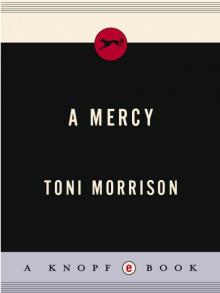 A Mercy
A Mercy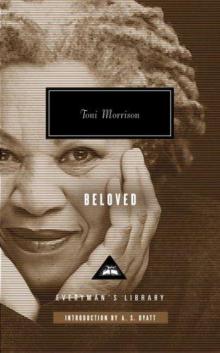 Beloved_a novel
Beloved_a novel